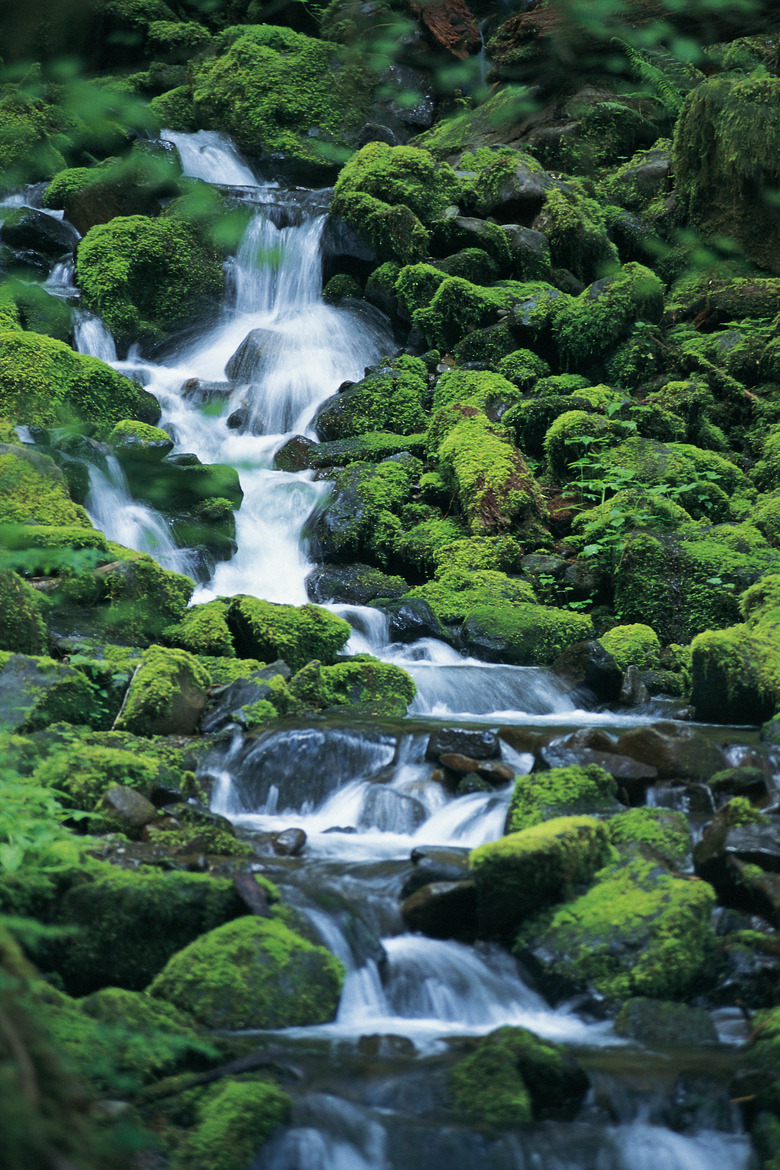What Is "Moss Rock"?
Step 1
Moss rock is a low-maintenance construction material. Elements constructed with moss rock easily blend into the outdoors. In addition, moss rock provides a visual sense of establishment and permanence to even the newest construction. It is frequently used to construct outdoor garden features, such as freestanding or retaining walls. The varying color, pattern of moss and size of the rocks provides versatility and rustic character to the landscape.
Do-It-Yourself Moss Rock
Step 1
It is possible to mimic the look of moss rocks or accelerate the growth of additional moss on rocks. Start by stirring together a handful of porcelain clay with water to form a paste-like consistency. Combine this mixture with a cup of undiluted fish emulsion and fresh, shredded mulch. Carefully paint this mixture on rocks, clay pots, concrete or other hard surfaces in your garden that you wish to cover with moss.
Step 2
- Moss rock is a low-maintenance construction material.
- It is possible to mimic the look of moss rocks or accelerate the growth of additional moss on rocks.
Promoting Moss Growth
Step 1
Moss thrive in cool, shady, north-facing locations. They require humid conditions. Moss will tolerate some temperature and moisture fluctuations without any permanent damage. Be aware, however, that during extended periods of time characterized by excessively hot or dry conditions, moss will go dormant and turn brown. In most cases, the return of more moderate temperature and rains will restore the color and health of moss. Mist moss periodically if or when humidity levels are low.
Alternative Options
Step 1
Artificial moss rock, which replicates the natural look of moss rock, is a more viable option for indoor locations that lack humidity. Artificial moss rock can form an attractive indoor feature wall or fireplace mantle. It is also available in veneer form, which is considerably lighter-weight and less expensive than natural rock moss. It can be enhanced with a stain to match an existing surface.
Step 2
- Moss thrive in cool, shady, north-facing locations.
- Artificial moss rock, which replicates the natural look of moss rock, is a more viable option for indoor locations that lack humidity.
